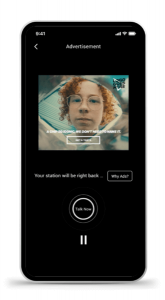
There are about 500 million tweets sent each day.
Facebook has more than one billion active daily users.
Those statistics are for only two social mediums.
We use social media. There is no doubt about it. We post about everything from interesting articles we’ve read to how ripped off we feel after buying a certain product. We’re sharing our lives online, but do we know who we’re sharing them with?
You may have a general idea of who you’re engaging with based on who you’ve chosen to friend or follow, but organizations attempting to use social media for marketing need a better understanding how the people with whom they’re trying to connect use social media. This identification need is why the audience is grouped into personas, making it easier to understand the groups and happenings in their lives that cause them to seek the organization’s help.
The Social Technographics Profile, pioneered at Forrester Research, uses survey information to group social media users into personas, based on their social media activities. The Social Technographics Profile consists of these personas:
Creators
These people develop blogs, articles, videos, music, images, and art, and upload them to social media platforms. They people are the most active social media content generators, but are not the largest group.
Conversationalists
These people participate in group discussions, engage in conversations and update their statuses. They are likely to use Twitter, Facebook and LinkedIn.
Critics
These people evaluate and comment on content produced by the first two groups. They post product ratings or reviews, comment on blogs, and participate in discussion forums.
Collectors
These people upload and save favorites on bookmarking sites, tag photos and subscribe to RSS feeds to automatically receive blog updates. They help organize and categorize online content.
Joiners
These people interact on social networks, but not in active ways that fulfill any of the roles above. They are the second largest group of social media users.
Spectators
These people consume the content others produce, but don’t add to it or necessarily participate in any way. They also have been called “lurkers,” and are the largest group of social media users.
Inactives
These people use the Internet, but do not participate on social media.
Of course, people don’t fall neatly into categories. It is likely that you identify yourself in more than one category. But, if you consider it carefully, you likely can determine that you more prominently fall into one persona.
While this method of dividing social media users isn’t perfect, it can help in giving marketers an idea of who they are speaking to. Coupled with social media demographics, personas begin to tell the story of the social media subcultures your organization should target with your marketing and where to target them.
Digital & Social Articles on Business 2 Community(21)








